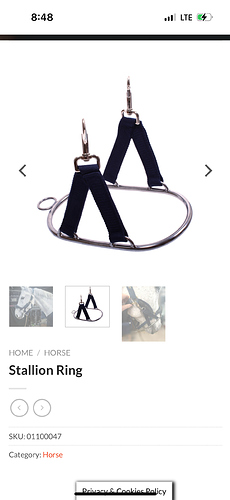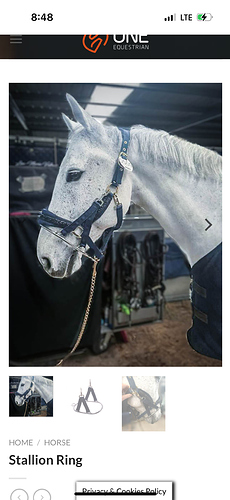This ended up way longer than I meant, so TL;DR: lots of good advice on how to handle this to keep everyone safe. Based on what you have said, a few theories on what’s happening in his brain, and a few science- and psychology-based ideas on things that MIGHT help him (I say might because every horse is different, but these are things that either I’ve had success with or other trainers I know that work with problem horses or rescues have had success with).
From a behavior standpoint: this sounds like trigger stacking combined with now knowing he can get away if he wants. Basically, many little things that cause a bit of anxiety or stress that individually are not a big deal, but when added together can become too much for them to deal with. The high-head, checked-out, holding the treat without chewing or frantic eating are all signs of this. Even the trying to eat grass then bolting when you ask the head to come up is a sign, horses will sometimes try to graze for comfort when they are anxious.
Totally random example with a bit of anthropomorphizing for clarity: say your horse is a bit ulcery. He went a couple hours without hay while he was in his stall, so his stomach is a bit more ouchy feeling normal. Trigger 1.
It’s time to tack up and go for a ride. The last ride was a pretty hard workout for him. He is anticipating another hard workout. Trigger 2.
Walking out to the arena. It’s a windy day. All sorts of smells are in the air, things are a lot noisier than usual, and things that don’t usually move are moving in the wind. It’s a lot of stimulation, overstimulation really. Trigger 3.
The other horses are all galloping around. A deep rooted instinct comes up, telling him he needs to be running too. Trigger 4.
Individually, or even a couple, of these triggers might normally be fine. But on this day, it’s too much. He sees sonething in the distance that he’s not sure about, but when he is watching to see if it’s danger, his face is pulled away. He knows he is being asked to move his hindquarters around, back up, etc, but he is still too worried about everything going on. He is overwhelmed and needs SOMEthing, so he tries to get some grass. He is pulled away from it. Suddenly it’s all too much, he can’t handle it anymore. He has to get away. He knows if he goes hard and fast enough, he can get back to where everything feels comfortable. So he bolts.
Obviously this is an exaggeration, but this basically is what happens in the horse brain. Most “disobedience” is a reaction to some sort of discomfort that’s too much. It could be pain, it could be anxiety. Amd horses have different tolerance levels. The stoic ones can plod around in pain without anyone ever knowing. The sensitive ones can hold it all internally, looking totally fine, until suddenly they just can’t deal anymore and explode. And it can be hard to determine the triggers.
Ultimately, it comes down to making sure (as best you can) that pain or physical discomfort is NOT Trigger first, then training your horse how to handle himself. He does already know he CAN get away, so that can be difficult. For safety sake, there are already lots of good tips on being able to prevent him from getting away, which definitely should be implemented now (for the safety of anyone handling him and his safety).
For the root of the problem: assuming everything else is fine physically that you possibly can fix, there are a few things I’d try if he were mine. First, I’d make sure that he is extremely in tune with me while leading. I’d make him walk at my speed, slow down if I slow down, speed up if I speed up, stop if I stop, back up if I walk backwards, immediately and every time. You can make it a really fun game actually. If you do liberty or clicker training, liberty leading with a clicker is a great way to work on this while making positive associations with it. The emphasis should be on relaxation and prompt responses. If you are having to tug on the lead to get him to stop, go, speed up, slow down at all, then this will help with tuning him in to you.
Next, I would have a “happy” thing you can turn to when he STARTS showing signs of stress. Pay attention to his facial expression, his body language. The nostrils might flare, the facial muscles tighten, the jaw clenched, the eyes get hard and triangular. It can be quite subtle, but if you can start seeing the signs of stress ASAP, you can start trying to mitigate it. The way to do that depends on you and the horse, and starts with working on it in a place he feels safe. It could be anything from using a target and a clicker, to a relaxed turn on the forehand or leg yield, to just lowering the head, even to playing the “leading” game where you start asking for halts and changes in walking speed. The key is to make it something pleasant, relaxing, with good associations and good feelings, and something that he very clearly understands the answer to. Which is why you need to establish it at a relaxed setting, very solidly, before you can use it to help him come back to you. Basically, you are training him to use this little act as his happy-feelings, safe, comfort “place” to run to (instead of his buddies).
If you want any actual suggestions on things to try, need to bounce off ideas or share progress/road blocks, or want to know possible ways to teach some of this, feel free to PM me. I’m no expert, but at the very least I can point you towards other resources if needed.
 Keep a whip with you and he was OK.
Keep a whip with you and he was OK.

